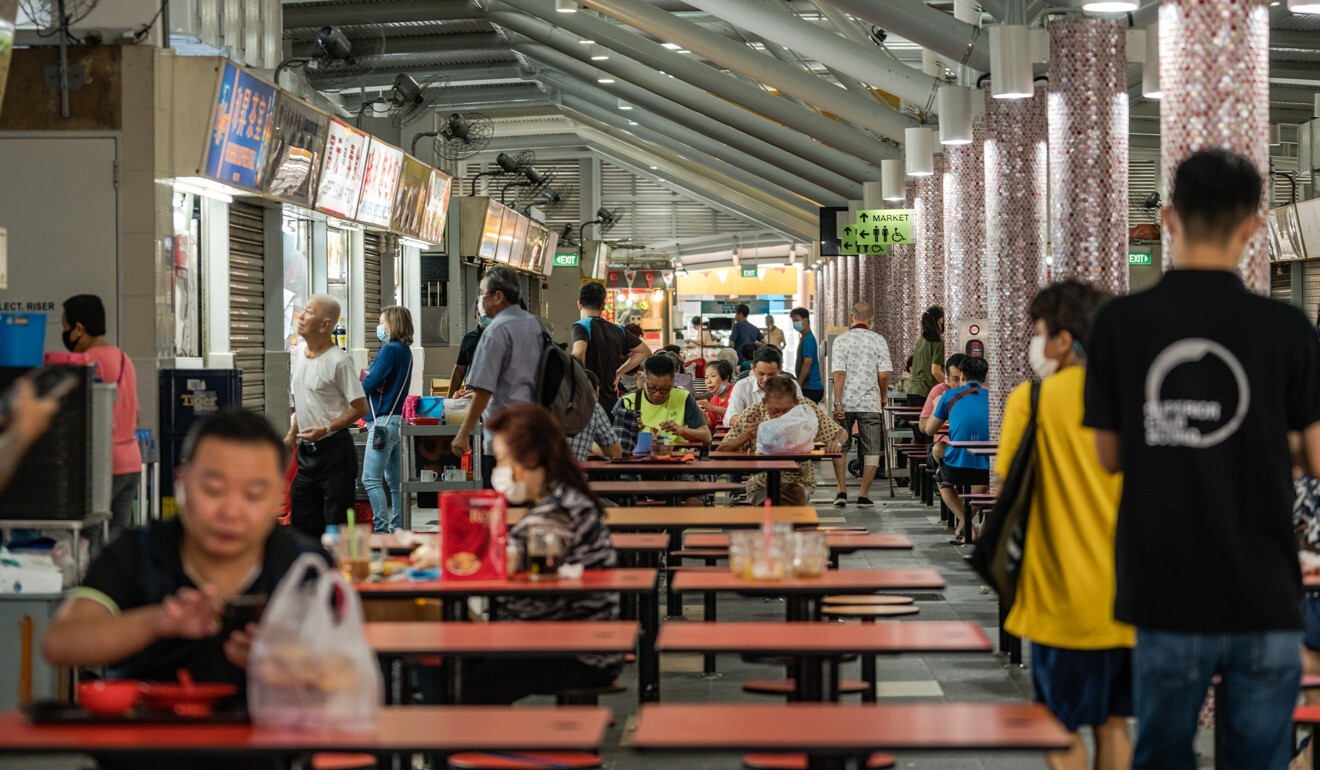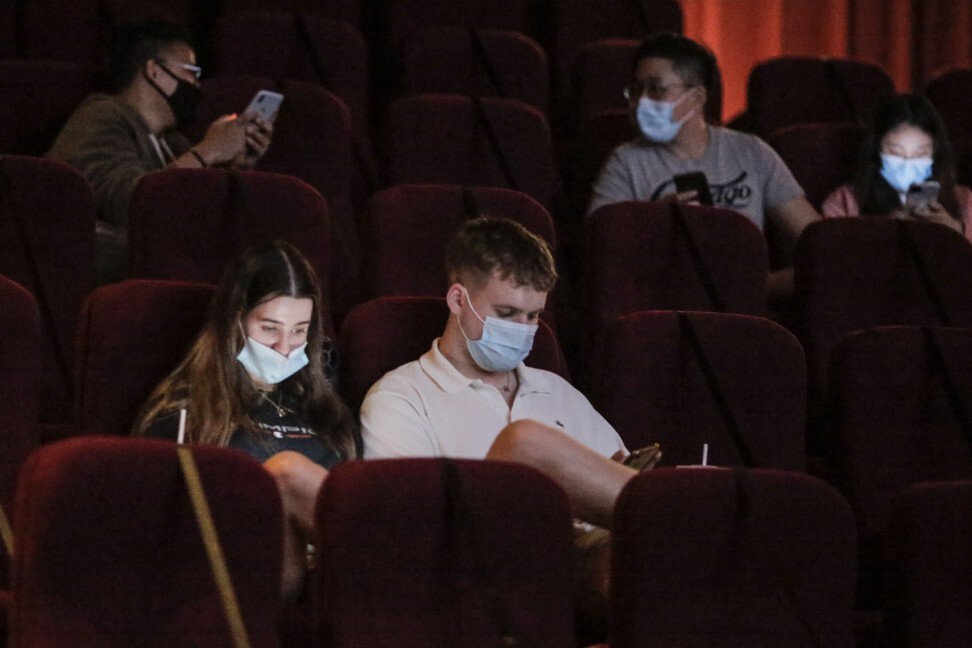
Singapore’s economy shrinks by over 40 per cent in Q2, entering recession
- The city state’s economy, seen as a bellwether for the region, was hit by the coronavirus lockdown and weak external demand, the Trade and Industry Ministry said
- Analysts see some signs of a recovery, but these could be affected by low consumer confidence and uncertainty over what would happen when stimulus funds run out
Singapore’s export-focused economy sharply contracted in the second quarter according to early estimates released by the trade ministry, sending the city state into a technical recession and putting it on track for its worst economic showing since independence.
As one of the first Asian economies to publish quarterly data, Singapore is often seen as a bellwether for the region. lts GDP for the second quarter shrank by 41.2 per cent on a quarter-on-quarter, seasonally adjusted annualised basis, after a 3.3 per cent drop in the first quarter from the preceding three months.
The Trade and Industry Ministry said the steep decline was due to the partial lockdown imposed from April 7 to June 1 after the number of coronavirus cases in the city state spiked, coupled with the “weak external demand” amid the global economic downturn caused by the pandemic.
Singapore election: voters deny PAP easy ride, deliver hard truths
The economy contracted by 12.6 per cent year-on-year in the April to June period, the ministry said, as it maintained its full-year growth forecast to come in at a -7 to -4 per cent range, after slashing its prediction three times this year, most recently in end-May.
It added that the manufacturing sector was the only sector that grew – at 2.5 per cent on a year-on-year basis – primarily due to a surge in output in biomedical manufacturing. It also noted that weak external demand and workplace disruptions during the three-month period had weighed on the chemicals, transport engineering and general manufacturing sectors.
Analysts said the figures were in line with their predictions and not unexpected as the partial lockdown forced most businesses and workplaces to shut.
“Everything ground to a halt,” said Selena Ling, head of treasury research and strategy at OCBC Bank, who added that most sectors had been badly hit by the pandemic. “For construction, for instance, because all the foreign workers were on stay-home notices in the dormitories, the [sector] would have easily seen up to 80 per cent of activity stalling.”
Indeed, the numbers pointed to a 95.6 per cent contraction in the construction sector from the previous quarter, down 54.7 per cent on a year-on-year basis.
As infection numbers have come down significantly, the city state, which had close to 50,000 coronavirus infections as of Monday, has been gradually easing its so-called circuit breaker measures since last month. Retail outlets and restaurants have reopened, but must enforce safe-distancing measures and adhere to a cap of five people per table for dine-ins. Cinemas have been added to the list of permitted activities, even though they have to observe a limit of 50 patrons per hall.
Lee Ju Ye, an economist at Maybank Kim Eng, suggested things would likely look up from here, describing the second-quarter’s dismal results as “the very bottom” of the downturn.
There are signs of recovery in the exports sector, for example, she noted, and the global demand for electronics has been steady.
“Similarly, we think that Singapore is past its worst and its exports didn’t suffer a big hit because the pharmaceutical [sector] had helped propped up demand,” Lee said. “External demand is improving given that a lot of countries are emerging from lockdowns.”

Still, there are other factors that could dampen Singapore’s recovery. Lee suggested that travel bans and border restrictions, which had badly impacted the tourism and services industries, remain in place even though countries are now in talks to set up “green lanes” and travel bubbles. This, she said, could translate to a slower recovery curve for those sectors.
Ling, the economist at OCBC, also expressed concern that consumer confidence might be hit as there were still fears of a looming recession. Even though there were reports of Singaporeans rushing to retail shops and restaurants when the partial lockdown was lifted, Ling said there was uncertainty as to when this pent-up demand could last.
“Once you go out, for instance, to have your bubble tea fix or your restaurant fix, is that going to be sustained? It’s not quite clear yet,” she said.
Singapore staycations can’t fill US$20 billion hole in tourism industry
Lee of Maybank Kim Eng also noted that the pandemic remained a huge worry for most Singaporeans, with mobility data suggesting that movement to retail and recreational venues remained 30 per cent lower than pre-Covid levels.
“It hasn’t normalised yet. You would expect some pent-up demand could result in a spike in spending, but that doesn’t seem to be playing out that strongly,” Lee said.
A looming recession would also force Singaporeans to think twice when spending money, added Ling. Economists had earlier predicted that full-year job cuts could reach as high as 150,000 this year.
The ruling People’s Action Party, which was returned to power with about 61.2 per cent of votes last week but with the opposition winning a record 10 seats in the 93-seat Parliament, had since the start of the year pledged a S$93 billion (US$66.9 billion) stimulus package to help businesses and citizens deal with the economic fallout from the pandemic.
But Ling said the package, which included the creation of 100,000 job and training opportunities, “could not fully compensate for all the potential business closures of job losses”.
Singapore focuses on creating jobs, commits to globalisation
Some of these measures, such as the co-funding of Singaporean employees’ wages, would run out eventually, Ling said, questioning whether the authorities would then step in with an additional fiscal injection.
Lee of Maybank Kim Eng also said that much remained to be seen if the target of 100,000 jobs created could be met, as most businesses that were still recovering from the pandemic would not need more manpower.
“I am hoping that the external demand environment will pick up such that you don’t get businesses and consumer confidence continue to remain weak,” Ling said. “If the demand is not there, the relief measures can only last that long, then at some point, when the relief measures run out, you are still stuck in a scenario where demand is still very tepid.”



